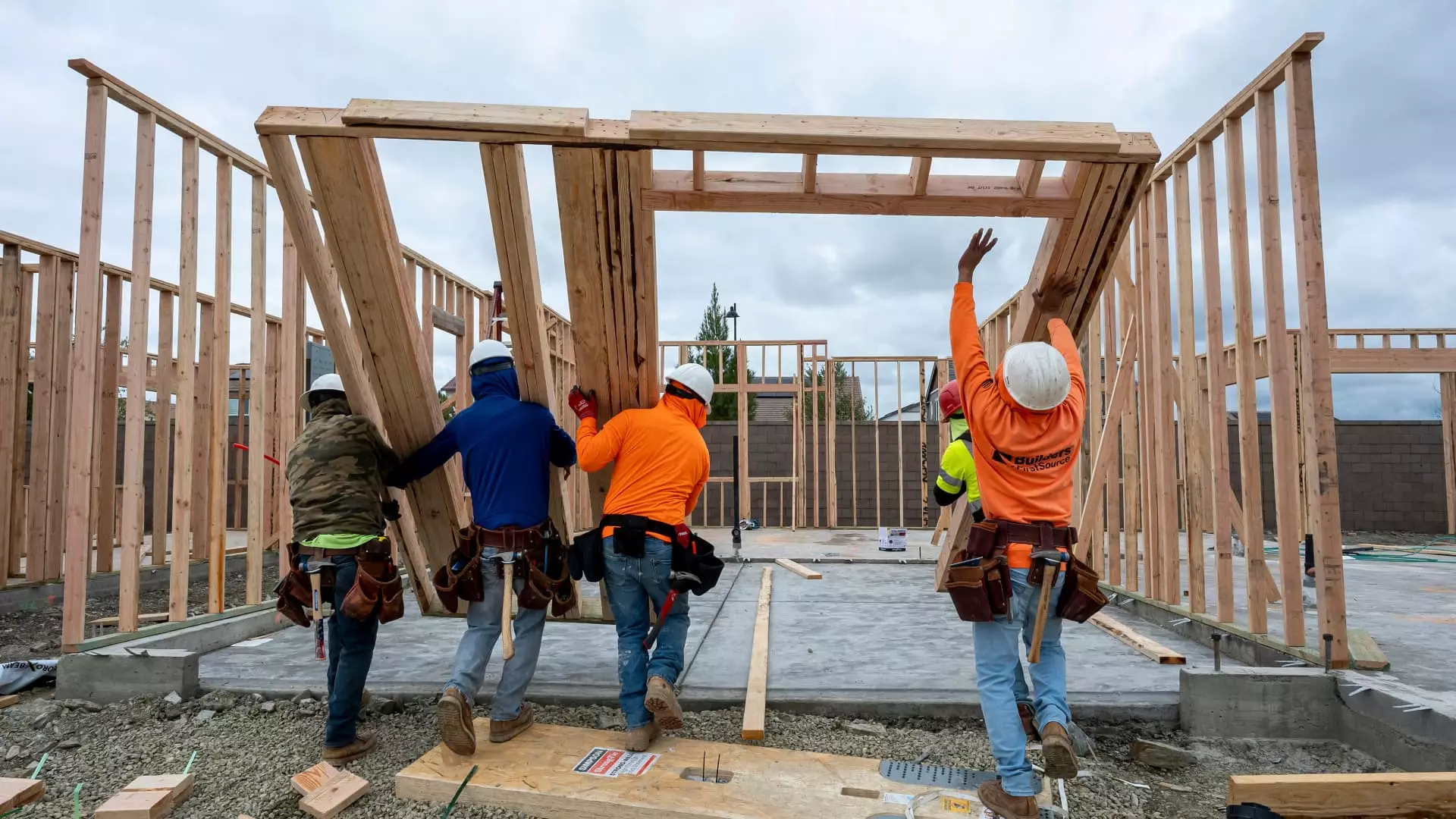In recent months, the landscape of homebuilding in the United States has shifted dramatically, plunging into a realm of uncertainty that poses formidable challenges for builders and buyers alike. The National Association of Home Builders (NAHB)/Wells Fargo Housing Market Index (HMI) for June revealed a disheartening drop in builder sentiment to 32, illustrating a stark contrast to the hoped-for stability within a recovering economy. This figure sits precariously below the neutral mark of 50, stirring concern over what this means for the housing market at large. The context in which this decline occurs—one marred by high mortgage rates and a sluggish economy—begs a deeper interrogation of consumer readiness and builder optimism.
Unforeseen Stagnation Amid Economic Promises
Analysts had projected a modest improvement stemming from recent trade negotiations and a supposed thaw in tensions under the Trump administration. However, the palpable anxiety surrounding the economy has proven far more potent than any administrative promises. The builder sentiment index has only dipped lower than June’s dismal reading twice since 2012— a telling sign that we’re not merely facing seasonal fluctuations but rather a systemic issue within the housing market. Following historically low mortgage rates that lured homebuyers during the pandemic’s early phase, the abrupt return to higher rates has left many prospective buyers retreating into hesitancy, unwilling to enter a market rife with financial unpredictability.
The Buyers’ Exodus: A Market in Retreat
The statistics reveal a grim narrative, with the major components of the index—current sales conditions, future sales expectations, and buyer traffic—all declining significantly. At a concerning low of 21, buyer traffic is a testament to the ennui plaguing the market. As Buddy Hughes, NAHB chairman, aptly noted, buyers are increasingly sidelined due to the combination of inflated mortgage rates and a challenging economic climate. This situation has prompted builders to adopt drastic measures, evidenced by the swelling number of those slashing prices in a bid to woo hesitant buyers. A staggering 37% of builders reported price cuts, the highest rate since tracking began three years ago, signaling a desperate attempt to stimulate a stagnant market.
A Trend Towards Declining Prices
What’s particularly interesting is that this shift represents a notable change in a market once characterized by fierce competition and rapid price appreciation. The average reduction of 5% speaks volumes about the disconnect between supply and demand in today’s market. The influx of inventory combined with an unwillingness among buyers to commit has created a pricing environment that is both tenuous and unpredictable. Robert Dietz, chief economist at NAHB, starkly forecasts a decline in single-family housing starts for 2025—a sobering prospect that reflects the gravity of the current situation.
The Ripple Effect on Major Players
The repercussions of these troubling metrics are felt across the spectrum, even among industry giants like Lennar, which reported an almost 9% drop in average home prices year-over-year for the second quarter. This is indicative of broader trends that could threaten the stability of the homebuilding industry at large. Co-CEO Stuart Miller’s remarks reveal an acknowledgment of the pressures exerted by ongoing high mortgage rates, which have left many builders to incentivize sales drastically. It’s evident that even the most seasoned players are navigating through treacherous waters, heavily influenced by a market that feels unyielding and resistant to change.
Regional Disparities and Challenges Ahead
In examining the sentiment across different regions, it is alarming to note that the South and West have exhibited the weakest builder confidence, regions that were once the heart of booming home construction. As consumer confidence dwindles, the outlook for these areas grows increasingly bleak. The construction sector often serves as a bellwether for overall economic health; thus, the current sentiment is not merely an issue of dollars and cents but one that could linger, impacting jobs, local economies, and overall consumer confidence.
While the prevailing mood paints a rather bleak future for homebuilders, it beckons urgent dialogue on how to navigate these turbulent times. The intersection of policy, consumer readiness, and economic stability will be critical as we forge ahead, requiring innovative approaches and serious introspection from all stakeholders involved in the housing market.

